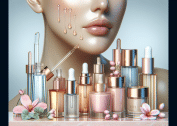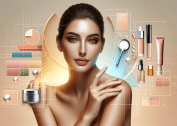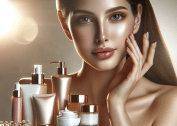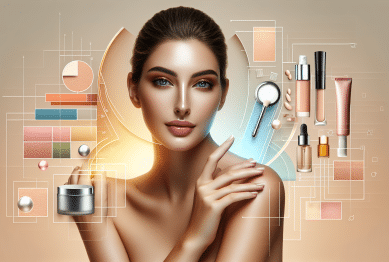Curious about glowing, youthful skin? Discover how a retinol skincare routine can transform your complexion when chosen wisely. This guide walks you through benefits, how to start, layering techniques, and what to avoid so you gain the confidence to make informed wellness and beauty decisions.
Understanding Retinol and Its Skin Benefits
Retinol is a derivative of vitamin A that has gained broad recognition in the skincare world for its ability to support smoother and visibly rejuvenated skin. This compound works by encouraging skin cell turnover, which can lead to a clearer complexion and fewer breakouts over time. In wellness and beauty routines focused on age management, retinol is often highlighted for its effect on fine lines and texture. Dermatologists commonly recommend retinol products to address a range of skin concerns, including mild discoloration, sun spots, and overall dullness. As an ingredient, it stands at the crossroads of wellness and science, giving users a way to seek brighter skin through an evidence-backed approach (https://www.aad.org/public/everyday-care/skin-care-secrets/anti-aging/retinoids).
The effectiveness of a retinol routine isn’t just hype—it’s supported by numerous clinical studies. According to American Academy of Dermatology (AAD) and other leading health organizations, users typically observe improvements in skin firmness and brightness after steady use. Fine lines, wrinkles, and superficial pigmentation often diminish gradually due to improved collagen synthesis. However, it’s important to remember that results develop over weeks or months, demanding patience and consistent application. Integrating retinol into a nightly skincare routine ensures optimal absorption and minimizes exposure to sunlight, which can degrade its potency. The transformation is gradual but visible when used correctly and as part of a holistic self-care regimen (https://www.niams.nih.gov/health-topics/skin-care).
In addition to anti-aging effects, retinol’s benefits extend to those managing acne and uneven skin tone. Many wellness enthusiasts select retinol for refining pores and minimizing acne scars, contributing to an even-toned look. Unlike aggressive treatments, retinol adjusts over time, reducing the risk of irritation when users start slow. Incorporating it mindfully, supported by moisturizers and barrier-boosting serums, lays the foundation for happier skin. Science-driven wellness approaches prioritize steady progress and overall skin health, qualities that remain central to a balanced retinol skincare routine.
Building a Retinol Routine: Steps and Key Considerations
When considering retinol, it’s crucial to choose the right concentration and product form to match the skin’s sensitivity. Novices should select lower strengths—usually about 0.025%—and apply only a pea-sized amount a few nights per week initially. This gradual introduction helps prevent irritation, redness, or flakiness, which are common for new users. Over time, frequency and strength can be increased as the skin builds tolerance. Product layering, especially using a gentle cleanser and hydrating moisturizer afterward, significantly reduces discomfort. A mindful retinol regimen avoids common pitfalls and offers more reliable benefits, aligning the process with overall skin wellness goals (https://www.mayoclinic.org/healthy-lifestyle/adult-health/in-depth/skincare/art-20048237).
The timing of retinol application is equally important. This ingredient is best used in the evening, as sunlight can break down its structure, reducing efficacy. Prepping the skin by ensuring it’s clean, dry, and free of residual actives helps retinol absorb properly and mitigates unnecessary sensitivity. Those new to the routine can sandwich retinol between thin layers of moisturizer—sometimes known as the “moisture sandwich” technique—to form a gentle barrier and keep discomfort to a minimum. Such attention to detail ensures both the effectiveness and comfort of a nightly skincare ritual, promoting consistency, and, over time, more glowing results (https://www.health.harvard.edu/newsletter_article/protect-your-skin-with-these-tips).
Some users worry about the dreaded “retinol purge,” a temporary period of breakouts or irritation as the skin acclimates. This can be discouraging, but it often leads to a subsequent period of visible improvement. Patience is essential: practitioners suggest sticking to the plan while supporting skin with a non-fragranced moisturizer and broad-spectrum sunscreen. Remember, retinol makes skin more sensitive to sunlight, so daily sun protection cannot be skipped. Gradually advancing the routine while listening to the skin’s responses avoids over-exfoliation and supports overall wellness. Ultimately, building a retinol regimen is about balance—adjusting frequency, dose, and barriers to foster healthier, more luminous skin.
Common Mistakes and How to Avoid Them
Many well-meaning individuals make the mistake of starting with too high a dose, layering on multiple actives, or neglecting hydration. These missteps can result in dryness, redness, and flaking that discourage continued retinol use. It’s tempting to rush the process, hoping for fast beauty gains, but slow and steady truly wins. By understanding that simplicity works, users can sidestep these missteps and nurture their complexions more effectively. Choosing gentle, fragrance-free cleansers and moisturizers to pair with retinol keeps the skin barrier strong and minimizes risk.
Another common challenge is combining retinol with incompatible products, such as vitamin C serums, benzoyl peroxide, or strong exfoliating acids. These ingredients can conflict with retinol, amplifying irritation or undermining its benefits. Experts typically recommend alternating these actives—vitamin C in the morning and retinol at night, for instance—for maximized results and less irritation. Paying attention to ingredient compatibility isn’t just a science lesson; it’s a path to a happier skincare routine and glowing results over time. Wellness includes patience and learning, not just product use.
Not all skincare ends at what’s applied. Insufficient sun protection is one of the largest mistakes retinol users make. Without proper SPF in the morning, skin’s sensitivity to UV rays increases, raising the risk of sunburn and premature aging. Using broad-spectrum sunscreen, wide-brimmed hats, and physical sun barriers ensures continued progress without setbacks. Building awareness and healthy habits creates the base for lasting improvement and keeps wellness journeys positive. Skincare isn’t just about appearance—it’s about caring for the body’s largest organ in a holistic way.
Choosing the Right Retinol Products
The range of retinol products continues to expand, creating both opportunity and confusion for shoppers. Deciding between retinol serums, creams, or over-the-counter retinoids depends on several factors including skin type, comfort with actives, and desired outcomes. Individuals with dry or sensitive skin often prefer cream or emulsion formulas, as these tend to be less irritating, while those with oilier skin might gravitate toward lightweight gels or serums for speedier absorption. Fragrance-free and hypoallergenic options serve sensitive individuals, making retinol routines accessible regardless of challenges or experience.
Avoiding filler ingredients—like strong fragrances, alcohol, or harsh preservatives—makes adapting to retinol easier and encourages longevity in use. Peer-reviewed sources indicate that beginners benefit from sticking to single-active formulas when possible. Discerning shoppers inspect ingredient lists, prioritizing transparency from brands and clarity in instructions. Consulting a dermatologist before beginning is encouraged for those with existing skin conditions or concerns, ensuring a routine that supports wellness goals and mitigates risk. With informed choices, most users find products that pair effectiveness with gentleness (https://www.skinhealthinstitute.org.au/page/187/retinoids-overview).
The price of retinol routines spans a wide range. Mid-range and affordable products from pharmacies can be as effective as high-end prestige items, supporting a wellness-focused approach to beauty on any budget. Reading unbiased reviews, consulting scientific sources, and examining product formulations all enable better decision-making. Skin responds best to regular, sustained use over luxury marketing promises. Ultimately, finding the right match is about performance, not hype, making the journey toward radiance both rewarding and empowering for users at every stage.
Layering and Pairing Retinol for Optimal Results
To make the most of retinol, the application order in the skincare routine matters. After gently cleansing, retinol usually goes onto dry skin before moisturizing. This step acts as a foundation for enhanced delivery and minimizes dilution. Layering a hydrating, non-irritating moisturizer on top helps calm potential dryness, while ingredients like niacinamide or ceramides strengthen the skin barrier. Water-based serums can precede retinol, but heavy or oily creams can dilute its impact. Layering is less about product volume and more about strategic sequencing and skin compatibility.
Pairing retinol with certain actives—like hyaluronic acid for hydration or peptides for additional repair—can boost glow without irritation. It’s safe to say that some combinations, such as pairing with sunscreen in the morning, are non-negotiable due to increased UV sensitivity. Avoiding potential irritants, however, takes priority for wellness-minded users. Separating strong exfoliants and retinol applications into different days maximizes benefit and reduces the likelihood of discomfort. Those tailoring a retinol regimen to their skin’s changing needs often see greater, steadier improvements in overall health and beauty.
For those managing multiple skin concerns—such as pigmentation, dullness, or sensitivity—layering requires a personal touch. Keeping routines simple, tracking results, and adjusting as necessary fosters a close relationship with one’s own wellness journey. Skincare apps or written logs help track which combinations yield the best outcomes without confusion. Approaching routines mindfully honors wellness and supports lasting transformation. By learning skin’s language and remaining adaptable, users can see remarkable changes and retain confidence in self-guided beauty practices.
Tracking Progress and Adjusting for Changing Skin
Skin isn’t static. Hormones, environmental stress, seasons, and age play a role in how retinol routines perform. Tracking progress means observing shifts over time—brightness, evenness, or reduced lines—while taking note of new sensitivities or discomforts. Journaling or using wellness apps to record increments enables smarter, evidence-based adjustments. Success is rarely overnight; positive changes may take several months, with minor setbacks along the way. Staying patient and flexible empowers users to adapt routines to fit evolving needs.
Sometimes, skin reacts to stress, harsh weather, or health changes by becoming more sensitive. In these phases, reducing retinol application or pausing briefly doesn’t mean giving up. Instead, supporting skin with gentle, fragrance-free products can restore balance. Returning to a structured routine once the skin settles ensures sustainability and prevents discouragement. Seeking input from qualified dermatologists at challenging stages offers peace of mind and additional strategies based on emerging skin science and new clinical recommendations.
Ultimately, the goal of a retinol routine is not just aesthetics but skin health over the long term. Integrating other lifestyle practices—such as sleeping well, hydrating adequately, and consuming a balanced diet—magnifies the benefits of well-chosen actives. Confidence in beauty grows organically through smart self-care, curiosity, and regular check-ins. Ongoing attention to skin’s subtle messages leads to more radiant results and a deeper appreciation for wellness as a holistic journey.
References
1. American Academy of Dermatology Association. (n.d.). Retinoids: Tips for using. Retrieved from https://www.aad.org/public/everyday-care/skin-care-secrets/anti-aging/retinoids
2. NIAMS, National Institutes of Health. (n.d.). Skin Care and Aging. Retrieved from https://www.niams.nih.gov/health-topics/skin-care
3. Mayo Clinic. (n.d.). Skincare: Dermatologist tips for healthy skin. Retrieved from https://www.mayoclinic.org/healthy-lifestyle/adult-health/in-depth/skincare/art-20048237
4. Harvard Health Publishing. (n.d.). Protect your skin with these tips. Retrieved from https://www.health.harvard.edu/newsletter_article/protect-your-skin-with-these-tips
5. Skin Health Institute. (n.d.). Retinoids overview. Retrieved from https://www.skinhealthinstitute.org.au/page/187/retinoids-overview
6. American Academy of Ophthalmology. (n.d.). Sunscreen and Skin Protection. Retrieved from https://www.aao.org/eye-health/tips-prevention/sunscreen-skin-protection









